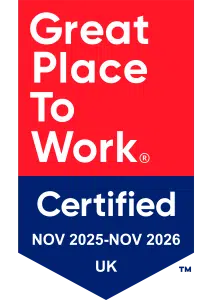Employee listening: more than just a survey

The employee listening cycle
Many organisations launch global employee surveys at the end of the year, with results shaping priorities in January. Too often, the focus is only on data collection and dashboards. While surveys are vital, the success of an employee listening programme depends on what happens before and after.
Here are the four key phases of an effective employee listening journey:
1. Foundations: setting up for success
Before the survey goes live, align objectives with business priorities, engage leaders, and prepare a communications plan. Employees need to understand the purpose of the survey and how their voice will make a difference.
2. Pre-survey communications: driving participation
Clear, consistent communication encourages employees to take part. Share goals, explain confidentiality, and make leadership visible. Updates and reminders build trust and keep momentum.
3. Post-survey communications: sharing results
Survey data means little without communication. Share insights openly and in ways that are relevant to different audiences. Recognise achievements, highlight key themes, and show that feedback is being taken seriously.
4. Action planning: turning feedback into change
The final step is the most important: moving from results to action. Provide leaders and teams with the tools, coaching and accountability they need to make improvements. Visible progress keeps employees engaged and shows that their input drives real outcomes.
Why this matters
When organisations treat employee listening as a continuous journey, not a one-off survey, it builds trust, inclusion and engagement. Each phase strengthens the next — setting up the programme, inspiring participation, communicating results, and embedding change.
Handled well, employee listening becomes a powerful driver of culture and performance. Done poorly, it risks becoming a tick-box exercise that leaves employees sceptical and disengaged.
By investing in communication and action at every stage, organisations can ensure every voice counts — and every action moves the business forward.
Written by Gonzalo For more on this subject, do explore the following articles:
